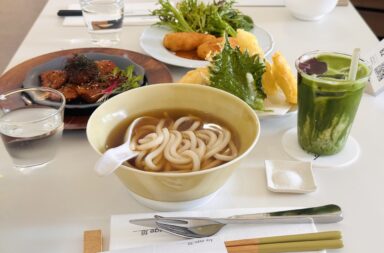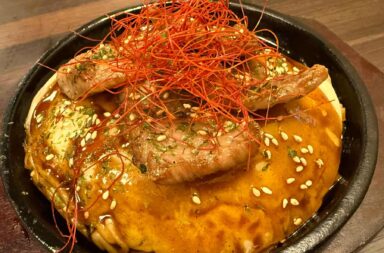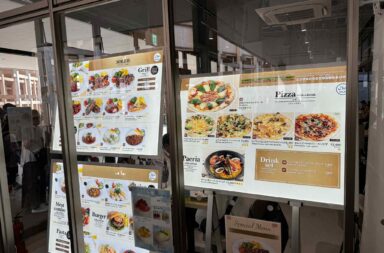This post is also available in: Indonesia
Who can beat Japanese sweets that please both eyes and mouth?
Japanese traditional sweets are mostly made from simple ingredients that make them considered Muslim-friendly on many occasions.
Today we picked up some of them based on their ingredients, which you can get when coming to Japan next time.
Please note that there may be exceptions. Please do check with the staff or check the ingredients carefully before purchasing.
See Also
Complete Guide to Identify Halal Products in Japan
Nama Yatsu-Hashi
Nama Yatsu-Hashi (or unbaked yatsu-hashi) is a well-known confection from Kyoto and comes in a triangular-shaped mochi sheet. The sheet is made from glutinous rice flour and sugar and is typically filled with red bean paste.
You may likely find those filled with various flavors from matcha and strawberry to cherry blossom and chocolate too!
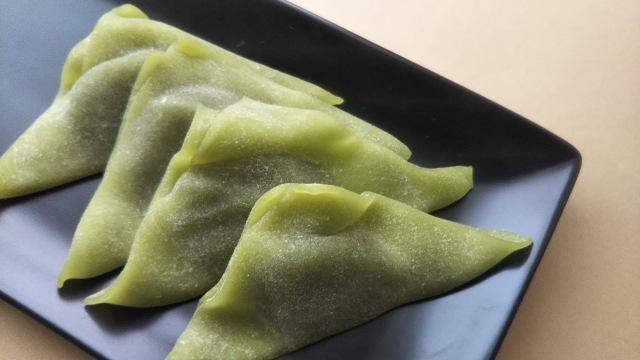
Akafuku
Akafuku is a kind of mochi sweet with smooth red bean paste placed on the top of soft mochi, comes in deep-red color with an extremely soft texture as you need a spatula to take it from the box (mostly the spatula is attached in the box). It is mostly made from glutinous rice (mochi), sugar, and red bean.
Even though it is known as the popular sweet from Mie Prefecture, you can also find it sold at souvenir shops in touristy areas in the Kansai area such as Osaka and Kyoto.
View this post on Instagram
Daifuku
Most international travelers are looking for daifuku when they touch down in Japan!
Daifuku is a round-shaped mochi originally filled with sweet red bean paste and dusted with white powder. However, nowadays you can find it filled with fruits (especially strawberries and makes it comes with the name “Ichigo (strawberry) daifuku”) and sweet cream.
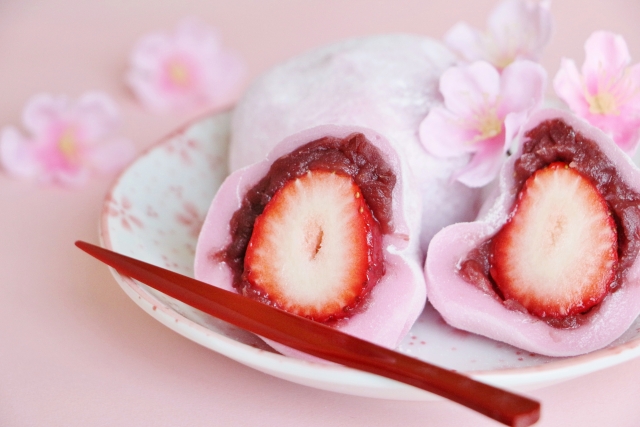
If you want to try the conventional daifuku, you should try mame-daifuku. The mochi is mixed with red beans and filled with red bean paste. It comes in a slightly salty taste on the top of the sweetness of red bean paste.
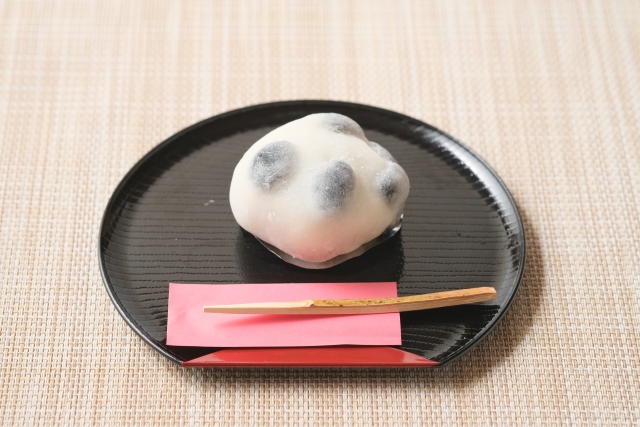
In the case of cream daifuku, there is a halal-certified frozen cream daifuku (in 4 flavors) you can get in Japan
See Also
Halal Cream Daifuku and Where to Get It Across Japan
View this post on Instagram
Ohagi
If you happen to visit a Japanese confectionery shop, you are more likely to see this sweet.
Ohagi is a popular sweet made from glutinous rice wrapped with red bean paste. It comes in a rich sweet taste that is perfect for your sugar craving.
Sometimes it comes dusted by kinako (roasted soybean) powder or black sesame seeds.
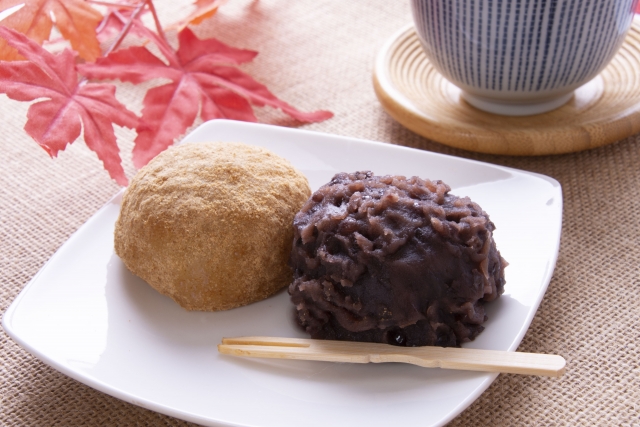
On some occasions, you might find it called Botamochi. Both ohagi and botamochi refer to the same thing and only the timing to eat it is different. It is called ohagi in autumn, and botamochi in spring.
Kinako-mochi and warabi-mochi
Still in the mochi family, kinako-mochi is one of the popular Japanese traditional sweets, comes in soft mochi (compared to another kind of mochi sweets), dusted with kinako (roasted soybean) powder, and topped with brown sugar syrup.
Kinako powder itself doesn’t have much flavor instead of a light nutty.

Kinako-mochi
In addition, there is a sweet called warabi mochi. made from bracken-root starch and appears white-transparent with a jelly-like texture which is perfect in summer.
The warabi-mochi also usually comes together with kinako powder and black sugar syrup.
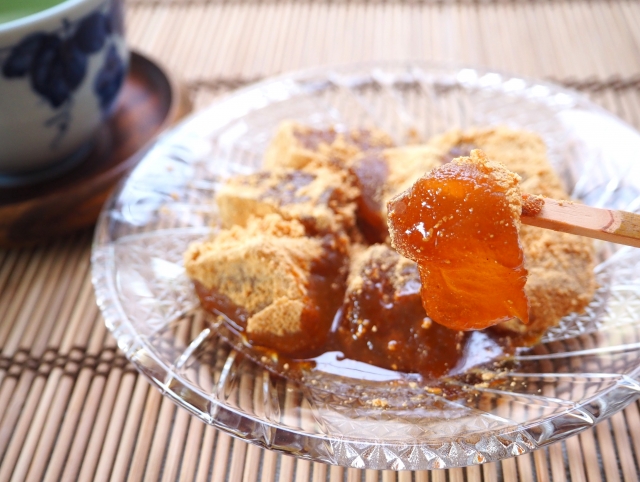
Warabi-mochi
Youkan (羊羹)
Youkan is a simple jelly-like dessert made from red bean paste, kanten (agar), and sugar. It usually comes in blocks, is free from fat (such as butter, cream, etc), and is rich in dietary fiber.
There are three types of youkan; neri youkan (firm pasty texture with a small amount of kanten), mizu youkan (softer and lighter texture with more water content), and mushi youkan (slightly firm texture without kanten, made by mixing the red bean paste with flour and usually filled with candied chestnuts).
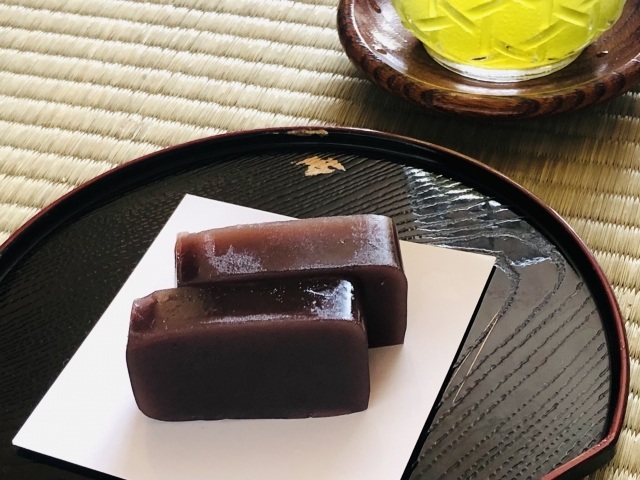
See Also
Japan’s Muslim-Friendly Snacks to Bring Back Home!
Muslim-Friendly Products at Tottori-Okayama Shimbashi-kan (Tokyo)
